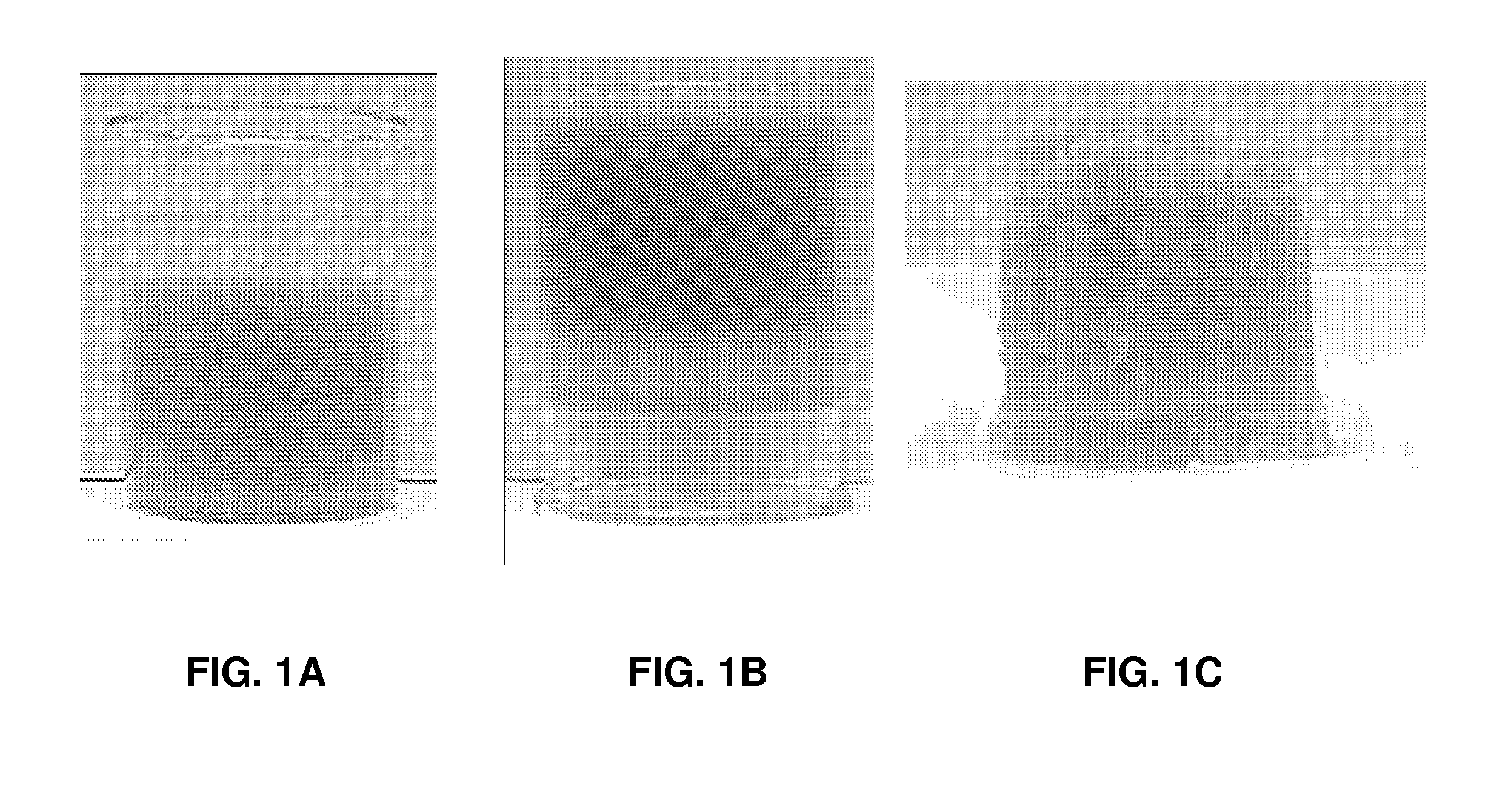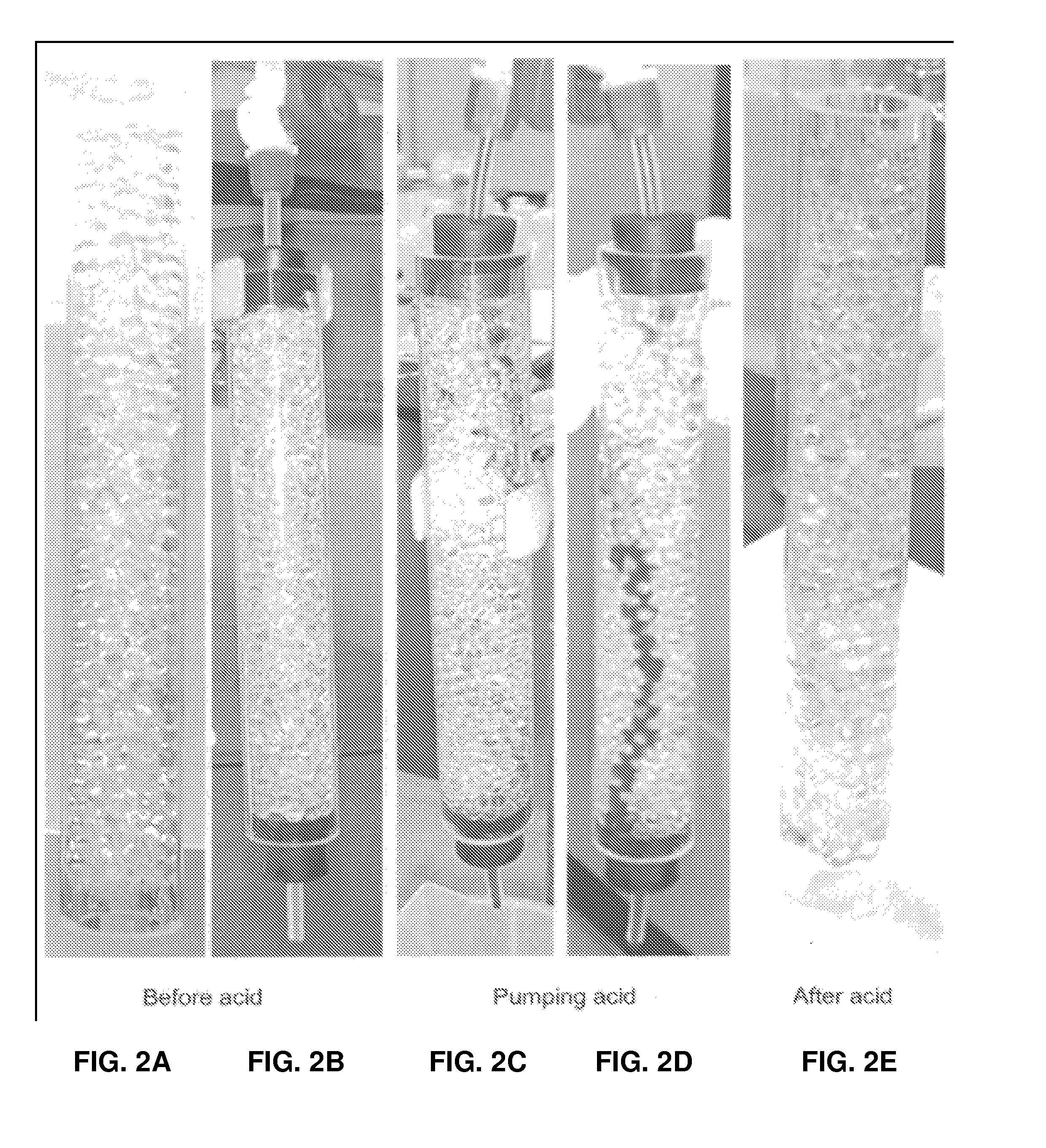Methods of underground formation consolidation
a technology of underground formation and consolidation, applied in the direction of fluid removal, chemistry apparatus and processes, borehole/well accessories, etc., can solve the problems of reducing the effectiveness of gravel pack and screen, sand production is undesirable, and gravel pack and screen may be plugged
- Summary
- Abstract
- Description
- Claims
- Application Information
AI Technical Summary
Benefits of technology
Problems solved by technology
Method used
Image
Examples
example 1
[0040]Shown in FIG. 1A is a photograph of a beaker containing PERM-PLUG™, available from Baker Oil Tools. This beaker contains 20 / 40 mesh (425 / 850 micron) sand together with 40 ml 6.7 by % FLC-1L and 1.5 ml FLH-1L at 70° F. (21° C.) before gelation. FLC-1L is a 37.5% by weight (bw) sodium silicate solution (40˜42° Bé from Fisher Scientific). FLH-1L is DBE, a dibasic ester mixture of dimethyl glutarate, dimethyl adipate and dimethyl succinate, available from DuPont. The solution formulation may be found in U.S. Patent Application Publication 2004 / 0031611 A1, previously incorporated herein by reference.
[0041]After gelling (or gelation) of the composition, the beaker was inverted and the photograph of FIG. 1B was taken, the sand consolidated by the gel of the composition remained in the bottom of the beaker.
[0042]Shown in FIG. 10 is the consolidated sand after the beaker has been removed. It may be seen that the 20 / 40 mesh (425 / 850 micron) sand used in Example 1 was successfully, compl...
example 2
[0043]In the photograph of FIG. 2A is shown a 1-inch (2.5 cm) ID and 18 inches (46 cm) long acrylic tube filled with 6-mm diameter glass beads, used to simulate an unconsolidated near-wellbore formation. Unconsolidated formation sand is usually less than 20 mesh (850 micron), which is much smaller than 6-mm diameter glass beads. This Example indicates that the silica gel has enough strength to hold the bigger beads, which means it is effective and easier to consolidate formation sands using the methods described herein. The composition used in Example 1 was then introduced into the acrylic tube and the glass beads were consolidated with the silica gel. After consolidation, the top and bottom ends of the tube were sealed with rubber connections and ports for introducing acid flow into the top of the tube and removing the acid from the bottom of the tube. This apparatus is shown in FIG. 2B.
[0044]Shown in FIG. 2C is acid being pumped through the acrylic tube; the acid was dyed red and ...
PUM
 Login to View More
Login to View More Abstract
Description
Claims
Application Information
 Login to View More
Login to View More - R&D
- Intellectual Property
- Life Sciences
- Materials
- Tech Scout
- Unparalleled Data Quality
- Higher Quality Content
- 60% Fewer Hallucinations
Browse by: Latest US Patents, China's latest patents, Technical Efficacy Thesaurus, Application Domain, Technology Topic, Popular Technical Reports.
© 2025 PatSnap. All rights reserved.Legal|Privacy policy|Modern Slavery Act Transparency Statement|Sitemap|About US| Contact US: help@patsnap.com



